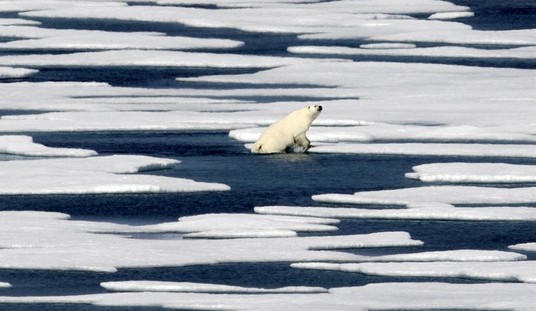The good news: Authorities have now accounted for 120 people who are safe after the collapse of a residential condo building in Miami-Dade county. The bad news, however, keeps getting worse. The number of confirmed fatalities rose to four this morning after rescuers retrieved three more bodies from the rubble. The number still left unaccounted for also rose, now up to 159:
BREAKING UPDATE: Miami-Dade mayor says 159 people are unaccounted for, and at least 4 are dead, following Thursday's high-rise collapse near Miami Beach. https://t.co/E3cG7SqIRp pic.twitter.com/b9A3jBIWSh
— NBC News (@NBCNews) June 25, 2021
More than 150 people were unaccounted for after a high-rise condo building partially collapsed near Miami Beach early Thursday, leaving at least four people dead and 11 injured, officials said. …
There were 120 people accounted for from the building and 159 people unaccounted for, Miami-Dade County Mayor Daniella Levine Cava told reporters Friday morning.
In an interview Friday with ABC’s “Good Morning America,” the mayor said the death toll had grown from one to four.
“Tragically, I woke up to learn that three bodies had been pulled from the rubble last night,” she said. “Devastating news for families waiting for any hope of survival. And of course, we’re going to continue to search. Those three people have not been identified at this time. It does bring our count to four of those who’ve lost their lives in this tragedy.”
Levine Cava also told ABC that there is no indication of foul play. No one had yet suggested it, and the surveillance video that captured the collapse in real time didn’t show any indication of an explosion. Structural engineers are already on site to determine the risks to rescuers from the remaining part of the building, and they are also investigating why the collapse took place as well.
USA Today has a disturbing potential update on the cause. A study published last year warned that the building, along with others in Sunrise, were sinking at an abnormally fast rate:
A Florida high-rise that collapsed early Thursday was determined to be unstable a year ago, according to a researcher at Florida International University.
The building, which was constructed in 1981, has been sinking at an alarming rate since the 1990s, according to a study in 2020 by Shimon Wdowinski, a professor in the Department of Earth and Environment.
When Wdowinski saw the news that the Champlain Towers South condominium in Surfside collapsed, he instantly remembered it from the study, he said.
The study itself doesn’t explicitly name the Champlain building. However, this passage’s reference to a “12-story condominium building” in the Miami Beach area appears to be to this same building:
Miami Beach is a densely populated barrier island, located between Biscayne Bay and the Atlantic Ocean (Fig. 1b). It is roughly 10 km long and 2.5 km wide at its widest point. InSAR time series results reveal a patch-like pattern of coherent velocity observations, reflecting contributions from variable scattering environments and high variability of tropospheric delay. Coherent results occur over the built environment, whereas incoherent results occur over open areas and some of the built environment. The point density obtained with the SBAS approach is of 924 points/km2 . Among the 18,949 measured points, 1555 present velocities below 1.0 mm/yr, while only 11 of them have velocities below 3 mm/yr (Table S5). The results indicate that most of the city (~97%) was stable during the 1993–1999 observation period (green in Fig. 3A). However, several localized subsiding areas were detected mostly in the western part of the city (yellow in Fig. 3A). These areas typically consist of single-family houses that were built on reclaimed wetlands (e.g. southernmost black circles in Fig. 3A). In some locations, as in the eastern part of the city, the detected subsidence is of a 12-story high condominium building (northernmost black circle in Fig. 3A). The detected subsidence rate is in the 1–3 mm/yr range, with uncertainty level of 0.6–0.8 mm/yr. Although higher subsidence velocities up to 3.8 mm/yr are registered in the artificial islands located west of the city, phase unwrapping errors leading to higher uncertainties cannot be excluded in such areas
According to Surfside Town Commissioner Eliana Salzhauer, no one brought any concerns about the building to the city. However, two earlier lawsuits from one condo owner might have been a red flag:
In 2015, a lawsuit alleged building management failed to maintain an outside wall, resulting in water damage and cracks. The owner who filed that suit had previously sued over the same issue, according to a court filing. The management company paid for damages in the earlier case, according to records.
Cracked walls or shifting foundations can be clues that sinking has affected the stability of a structure, according to Matthys Levy, a consulting engineer, professor at Columbia University and author of “Why Buildings Fall Down: How Structures Fail.”
Residents of the building might have noticed changes, he said.
“Had there been changes in the building? Cracks in the walls, in the floor? Floors not being level, things rolling off tables?” he said. That would indicate the building was shifting.
You can bet that structural engineers will be asking those questions now. This doesn’t mean that we have found the cause of this collapse yet, nor can we be certain that other causes didn’t contribute to it even if this was a factor. However, if subsidence turns out to be the cause, the victims and their families are going to demand some answers for why this wasn’t addressed before the collapse.
Update: The study was published last year. The data had been taken since the 1990s. I have changed the reference above to correct my error.









Join the conversation as a VIP Member